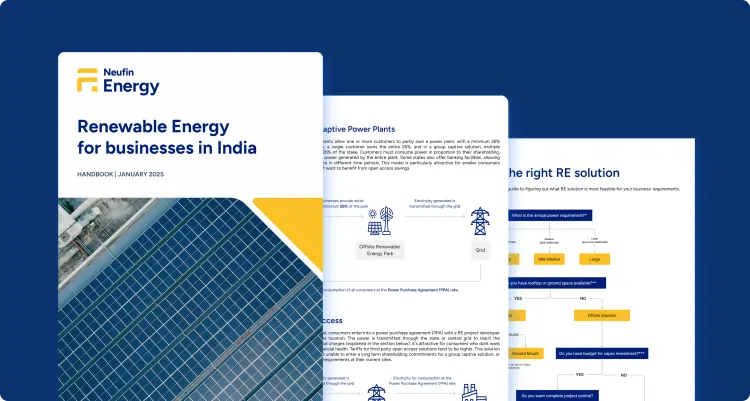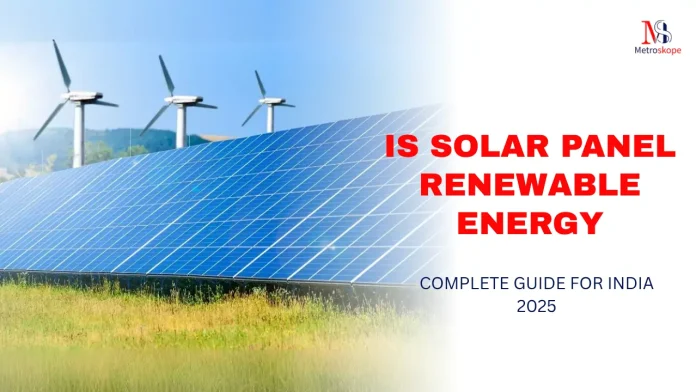Is Solar Panel Renewable Energy:
Is Solar Panel Renewable Energy: Yes, solar panels are definitively renewable energy sources. Solar panels harness energy from the sun, which is an inexhaustible resource that naturally replenishes itself daily.
Solar power is considered renewable because sunlight is continuously available and will remain so for billions of years, making it fundamentally different from finite fossil fuels like coal, oil, and natural gas.
Scientific Definition of Renewable Energy
Renewable energy comes from natural sources that replenish themselves faster than they are consumed.
Solar energy perfectly fits this definition because:
- The sun produces energy continuously through nuclear fusion
- Solar radiation reaches Earth daily regardless of human consumption
- No depletion occurs when we capture and convert sunlight
- Environmental impact is minimal compared to fossil fuel extraction
India’s Solar Revolution: 116 GW Achievement

Historic Milestone Reached
India has achieved a groundbreaking milestone by surpassing 100 GW of installed solar power capacity in January 2025.
As of June 30, 2025, India’s total solar capacity stands at an impressive 116.24 GW, making the country the third-largest solar power producer globally, trailing only China and the United States.
Breakdown of Solar Capacity
| Solar Segment | Capacity (GW) | Percentage |
|---|---|---|
| Ground Mounted Solar Plants | 89.29 GW | 76.8% |
| Grid Connected Rooftop | 18.84 GW | 16.2% |
| Hybrid Projects (Solar Component) | 3.06 GW | 2.6% |
| Off-Grid Solar | 5.05 GW | 4.4% |
| Total Solar Capacity | 116.24 GW | 100% |
Future Pipeline
India’s solar expansion continues aggressively with 84.10 GW under implementation and an additional 47.49 GW under tendering.
This brings the total planned solar and hybrid projects to 296.59 GW, demonstrating the country’s commitment to renewable energy leadership.
Government Initiatives and Policy Support
PM Surya Ghar Muft Bijli Yojana
The flagship PM Surya Ghar scheme, launched with an investment of over ₹75,000 crores, aims to install rooftop solar in 1 crore households. Key benefits include:
- Up to 300 units of free electricity monthly for participating households
- Maximum subsidy of ₹78,000 for 3kW rooftop installations
- Streamlined online application process through pmsuryaghar.gov.in
- Easy financing options with 20-30% down payment requirements
Subsidy Structure 2025
| System Capacity | Subsidy Amount | Coverage |
|---|---|---|
| Up to 1 kW | ₹30,000 | Complete installation support |
| 2 kW | ₹60,000 | Significant cost reduction |
| 3 kW & above | ₹78,000 maximum | Maximum government assistance |
The government has extended solar subsidies until March 31, 2026, ensuring continued support for renewable energy adoption.
Why Solar Panels Are Completely Renewable
Energy Source Characteristics
Solar panels convert photons from sunlight into electricity through photovoltaic cells, utilizing semiconductor materials that create electrical current when exposed to solar radiation.
This process involves zero fuel consumption and produces no emissions, making it entirely sustainable.
Environmental Impact Assessment
Unlike fossil fuels, solar energy:
- Produces zero greenhouse gas emissions during operation
- Requires no water for electricity generation
- Creates no air or noise pollution
- Has minimal land impact with dual-use applications possible
- Components are recyclable at end-of-life
Resource Availability in India
India’s solar potential is estimated at 748 GW, assuming just 3% of wasteland area is covered by solar PV modules according to the National Institute of Solar Energy (NISE).
This massive potential exceeds current electricity demand by several times, ensuring long-term energy security.
Benefits of Solar Renewable Energy in India
Economic Advantages
Solar power offers substantial economic benefits for Indian consumers and the economy:
- Electricity bill reduction of up to 90% for residential users
- Energy independence reducing fossil fuel import dependence
- Job creation across manufacturing, installation, and maintenance sectors
- Industrial competitiveness through lower energy costs
- Rural economic development through decentralized power generation
Environmental Benefits
Solar energy directly contributes to India’s climate commitments:
- Supporting India’s goal of 500 GW renewable capacity by 2030
- Reducing carbon emissions intensity by 45% as per NDC commitments
- Contributing to carbon neutrality by 2070 target
- Improving air quality by displacing coal-fired power generation
Energy Security Benefits
Solar power enhances India’s energy independence by:
- Reducing import dependence on coal and petroleum
- Providing distributed generation improving grid resilience
- Enabling rural electrification in remote areas
- Creating energy storage opportunities when combined with batteries
Technical Aspects of Solar Renewable Energy

Solar Technology Types
India utilizes multiple solar technologies for different applications:
- Photovoltaic (PV) panels for direct electricity generation
- Concentrating Solar Power (CSP) using mirrors and thermal systems
- Hybrid systems combining solar with wind power
- Solar-plus-storage solutions for 24/7 power availability
Performance and Reliability
Solar PV with battery storage plants can meet electricity demand with 100% reliability for 89% of days annually.
Generation shortfalls during monsoon seasons can be compensated by wind, hydro, and pumped storage systems, ensuring continuous renewable energy supply.
Regional Solar Development
Leading Solar States
India’s solar development spans across multiple states with significant contributions from:
- Rajasthan hosting the world’s 11th-largest Bhadla Solar Park (2,245 MW)
- Gujarat leading in solar policy innovation
- Maharashtra focusing on rooftop solar adoption
- Tamil Nadu combining solar with wind power
- Karnataka developing large-scale solar parks
Rural and Urban Applications
Solar energy benefits diverse sectors across India:
- Agricultural applications through solar pumps and cold storage
- Industrial installations reducing operational costs
- Residential rooftops providing household energy independence
- Commercial establishments achieving sustainability goals
Investment and Market Growth
Record Investment Levels
Investments in India’s renewable energy sector reached record levels in Q1 2025, driven by:
- Large-scale acquisitions and debt financing deals
- Private sector participation in capacity expansion
- International cooperation through the International Solar Alliance
- Manufacturing incentives supporting domestic production
Market Outlook
India’s renewable power output grew 24.4% to 134.43 billion kWh in the first half of 2025, representing the fastest growth pace in three years.
This acceleration demonstrates the increasing contribution of solar and other renewables to India’s energy mix.
Future Outlook and Targets
2030 Renewable Energy Goals
India aims to achieve 500 GW of non-fossil fuel capacity by 2030, with at least 250 GW expected from solar power.
This represents the world’s largest renewable energy expansion plan, requiring:
- Annual capacity additions of 50 GW from 2023 onwards
- Continued policy support through tenders and incentives
- Infrastructure development including transmission systems
- Technology advancement in storage and grid integration
By 2070, solar energy will be crucial for India’s carbon neutrality commitment.
The transition involves replacing coal-fired power plants with solar and other renewables, supported by:
- Advanced battery storage systems
- Smart grid technologies
- Green hydrogen production using solar electricity
- Electric vehicle charging infrastructure powered by solar
Solar panels are unequivocally renewable energy sources, representing one of the cleanest and most sustainable electricity generation methods available.
India’s remarkable achievement of 116 GW solar capacity by mid-2025 demonstrates the country’s leadership in renewable energy adoption.
The combination of abundant solar resources, supportive government policies, declining technology costs, and environmental benefits makes solar energy the cornerstone of India’s sustainable energy future.
With continued investment and policy support, solar power will play an increasingly vital role in meeting India’s growing energy demands while contributing to global climate goals.

